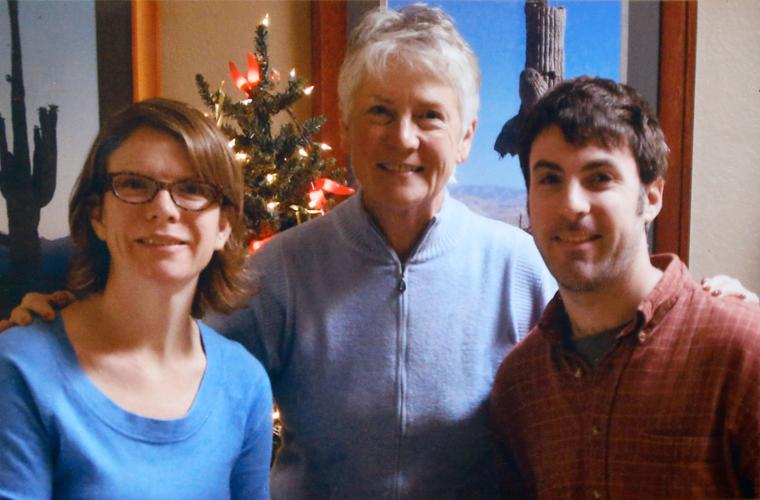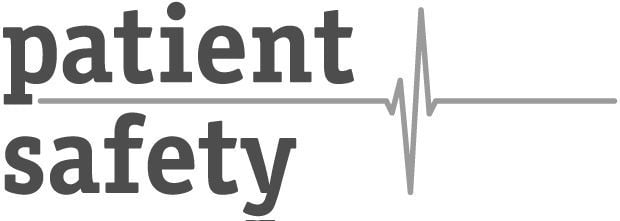At 8 years old, Holland was a dancer, a swimmer, a horseback rider and a cyclist. She loved Brussels sprouts and salmon and dreamed of becoming a veterinarian.
Then one day — Sept. 17, 2014 — Holland changed.
The child who had slept through the night since infancy was suddenly afraid to go to bed.
The girl who had always been a good eater refused food.
And though Holland had never been seriously ill, she was now in terrible pain. Her head ached. Her stomach hurt.
Eventually she became so weak she required a wheelchair. She needed sunglasses because even ambient light was brighter than she could stand. Small noises seemed ear-piercing.
“Make them go away!” she said at the sound of chirping birds. “They are hurting my head.”
But as horrifying as it was for her parents and older sister to watch Holland suffer, the worst part was trying to find out what was wrong with her.
For more than a year, the family, who lives in Scottsdale, listened to doctor after doctor say they didn’t know what was wrong with their little girl. Occasionally providers would claim they had pinpointed the problem, but their diagnoses were always incorrect.
Not every doctor
has right answer
Diagnostic errors — generally defined as delayed, missed and inaccurate diagnoses — account for an estimated 40,000 to 80,000 U.S. deaths each year. Yet diagnosis is an aspect of medicine that gets little attention and minimal research dollars, says patient safety expert Dr. Mark L. Graber, president and founder of the national nonprofit Society to Improve Diagnosis in Medicine.
While advocates like Graber are working to bring attention to misdiagnosis and its role in patient safety, it remains what a 2015 Institute of Medicine (now National Academies of Sciences, Engineering and Medicine) report calls a “blind spot” in medicine.
“Diagnosis is a conversation, that is for sure. It takes both parties and, particularly if the health-care provider isn’t heading the right way, it is absolutely incumbent on patients to do their own research,” says patient safety advocate Helen Haskell of Mothers Against Medical Error. “Most of the people I know with a difficult diagnosis found the answer themselves.”
With more than 10,000 diagnosable conditions plus an estimated 200 new ones each year, and more than 5,000 laboratory tests, not every doctor can have the right answer. The September 2015 report, ”Diagnostic Error in Health Care,” using postmortem analyses, implicates inaccurate or delayed diagnoses in one of 10 patient deaths that required an autopsy.
Yet autopsies are conducted in fewer than 6 percent of hospital deaths, down significantly from the mid-1900s. Patient safety advocates say doing more of them could help doctors better spot patterns in diagnostic errors.
Improved communication between providers and patients also could prevent another problem in U.S. medicine: overtesting, overscreening and overtreatment.
“There are three major players — the patient, the doctor and the health-care system — and for sure a lot of the onus is on the patient,” says Graber, who is a professor emeritus of medicine at the State University of New York at Stony Brook, and a senior fellow at RTI International, a nonprofit research organization based in North Carolina.
“In an ideal world, and with a terrific health care system that would not be the case. But we are a long, long way from that. In the meantime, you really have to watch out for yourself.”
It wasn’t Crohn’s
Tim Bentley’s first clue, in retrospect, came from his visit to a Tucson physiatrist — a nerve doctor — in the spring of 2007, when he couldn’t move his left big toe. Bentley, 40 at the time and working in commercial real estate, was a long-distance runner logging 30 to 40 miles per week.
A series of tests didn’t turn up with anything except that Bentley was low on vitamin B12. That could be due to a number of things — trauma, poor diet, extreme alcoholism, irritable bowel syndrome and, in rare cases, lymphoma.
Bentley never did resolve his toe problem. But learning that he was low on B12 made him wonder about his health.
By the fall of 2007 he told his wife about some other problems he’d been having — watery diarrhea three or four times a day, pains in his abdomen that felt like spasms, and a hard mass in his lower abdomen.
She told him to go to the doctor, and a local gastroenterologist diagnosed Crohn’s disease. Bentley began keeping a diet diary and started two prescription drugs for the Crohn’s — Entocort and Asacol.
As it turned out, he did not have Crohn’s disease. But it would not be until April 2009 that he learned what was really wrong.
“Guys can be dumbasses sometimes,” he says. “I was in shape and I downplayed my symptoms. When my symptoms didn’t resolve, I eventually did speak up but I didn’t do it right away, and I didn’t ask enough questions.”
While on the Crohn’s disease drugs, Bentley felt increasingly lethargic. He still had abdominal cramps and was battling sinus infections and shortness of breath. Then his bowel movements turned black.
More than a year after the Crohn’s diagnosis, Bentley went back to the same Tucson gastroenterologist, who ordered a CT scan. Finally Bentley got the correct diagnosis — Stage IV non-Hodgkin follicular lymphoma.
Chemotherapy and radiation sent the disease into remission by March 2010.
As retail manager for The Core, Tucson Medical Center’s wellness center at La Encantada, Bentley now shares his experience with other cancer patients and tells anyone who asks to be proactive. Bring a notebook, document what the doctor says, and write down both questions and answers, he advises.
“If you are an active and engaged patient, you are going to be a great patient,” says Bentley, 50, who is also president of the Southern Arizona Roadrunners.
“Doctors are smart, but so are you. Doctors go to school for a long time and know a lot of big words. But don’t be intimidated by this. Patients have to be engaged. They have to ask the questions.”
Indeed, Graber of the Society to Improve Diagnosis, says problems with communication are often at the root of diagnostic errors.
“Doctors have so little time and patients feel like they are not being listened to,” he says. “Part of it is saying, ‘I don’t think you are listening to me. I don’t think you are getting this. I think I need a second opinion.’”
Doctors should welcome patients who seek second opinions because fresh eyes catch mistakes, Graber says.
“Trying to get an expert as soon as you can is very important,” he says.
As medicine evolves, new discoveries change old assumptions. The New England Journal of Medicine just last month published a study led by Harvard researchers who found some patients are at risk for being misdiagnosed with hypertrophic cardiomyopathy.
The researchers, calling their findings a “cautionary tale,” found genetic testing was misdiagnosing some patients as having the condition when they didn’t. The testing was based on studies that did not account for racial variants, the study concluded.
Patient profiles for certain diseases can change over time, too. Throat cancer, for example, was historically linked to smoking and alcohol use and seen in older patients. It is now being seen in seemingly healthy middle-aged men who have never smoked.
Tucson head and neck surgeon Dr. Steven J. Wang says the younger demographic is getting cancers of the oropharynx from HPV — the human papillomavirus. But the symptoms could be easily missed by a primary-care doctor unfamiliar with that shift.
Not a hypochondriac
The Coalition to Improve Diagnosis, which includes several leading health-care organizations and medical societies, is raising awareness about how to be a better patient and advocating for more research funding of diagnostic error.
Among tips for patients — no news about a test result is not always good news. In other words, follow up. Also, test results aren’t always right — and even if they are, they don’t tell a complete picture.
“Tests should not be treated as an answer, but an aid,” says Haskell, who in addition to her work with Mothers Against Medical Error is co-chair of the patient engagement committee at the Society to Improve Diagnosis in Medicine.
Holland's parents say their daughter’s primary care physician provided much-needed support during the two years they visited dozens of doctors, including kidney specialists, gastroenterologists, psychiatrists and pain management specialists in Arizona and California trying to find help for their daughter. She listened, and it helped.
But Karen Blandini, Holland’s mom, was surprised that so many specialists they saw did not seem to consider her daughter’s history, which included no chronic illnesses, sleep problems or emotional issues.
Among the diagnoses they heard were Lyme disease, lactose intolerance, babesia, abdominal migraines, a possible brain tumor, obsessive compulsive disorder, anxiety. One doctor said Holland was feigning illness to get attention, Blandini says. Another told Blandini to see a psychiatrist.
“You don’t know my daughter,” Blandini found herself repeating. “She has no history of hypochondria.”
Holland’s obsessions mounted. She used a measuring tape to determine whether anyone had moved the carefully organized belongings in her bedroom. If she thought someone had been in her room, she got hysterical and would tell her family her room was contaminated. Holland’s muscles were atrophying and her parents begged her to eat. Blandini, who owns her own financial consulting business, had to stop working.
Blandini’s entire family, including older daughter Halston, was in a constant state of stress.
Their experience isn’t unusual, says Haskell, of Mothers Against Medical Error.
“When doctors can’t reach a diagnosis they are far too quick to jump to a psychiatric diagnosis,” she said. “They say, ‘If I can’t figure out what this is, it must be imaginary.’”
Cancer that wasn’t
Diana Wilkinson still remembers standing in her Tucson kitchen in December 2008 and getting the call that changed her life. Her primary care doctor, reading from the results of a scan, told her she had lung cancer.
Wilkinson, who was then 58 years old and had never smoked, put out the word that she was looking for any and all resources about non-small cell lung cancer. She got her affairs in order. Her daughter flew in from New Mexico, her son and mother from Kansas, and her sister from D.C.
But when surgeons removed what they believed was cancer from the upper left lobe of her lung, the pathology did not show cancer. Rather, it was coccidioidomycosis, a respiratory disease endemic to Arizona that’s commonly known as valley fever.
The disease is frequently misdiagnosed by doctors from other parts of the country who are not familiar with it, says Dr. John Galgiani, a physician who directs the UA’s Valley Fever Center for Excellence.
Wilkinson harbored no anger for her doctor, who didn’t attend medical school in the Southwest. In fact, some good came out of the ordeal. Her relationships improved. She got out of a marriage that was no longer working and she began doing Pilates. One of the most important things she did, she says, was to begin volunteering with the Valley Fever Center for Excellence, doing education and awareness.
Her experience and outreach already are helping others. When one of her friends, who lives in Tucson during the winter, fell ill back home in the Midwest, she knew to ask for a Valley fever test because of Wilkinson. She tested positive and was successfully treated with anti-fungal medications.
Deadly sepsis
Diagnostic errors are the leading type of paid medical malpractice claims, the 2015 Institute of Medicine report says. The report also found that such errors are almost twice as likely to result in death compared to other claims, and represent the highest proportion of total payments.
Three misdiagnosed conditions most commonly leading to insurance claims are cancers, infections and cardiovascular conditions, says Graber, of the Society to Improve Diagnosis in Medicine.
The CDC recently launched a public awareness campaign about sepsis, which can get missed in emergency rooms. Sepsis happens as the result of the body’s overwhelming response to an infection, and in 80 percent of cases the infection originates outside of the hospital.
Four types of infections are most often associated with sepsis, which the CDC calls an “unrecognized killer” because its symptoms often go unrecognized until it’s too late — lung, urinary tract, skin and gut. Symptoms include shivering, extreme pain or discomfort, clammy or sweaty skin, confusion or disorientation, shortness of breath and a high heart rate.
In May, Tucson resident Sheri L. Hill filed a wrongful-death lawsuit against Tucson Medical Center over the sepsis-related death of her 30-year-old son, Jared Dustin Hill. The hospital denies wrongdoing.
On March 17, 2015, Jared went to the TMC emergency department, which was unusually busy. Jared had a sore red leg and described the pain to hospital officials as a 10 out of 10, state records show.
Sheri called the hospital several times while Jared waited, saying her son was in pain and needed help. The state report indicates hospital officials told her that sicker patients needed to be seen first, and that he was being checked on.
The father of two waited for seven hours and left without being treated, a state report and court documents say. About 11 hours after leaving, the state report says Jared went to another hospital and was admitted to the intensive-care unit with sepsis. He died March 23.
Tucson Medical Center paid a $1,000 fine to the state for failing to ensure that three patients, including Jared, received emergency services the night of March 17.
The incident prompted TMC, which has the state’s third-busiest emergency department, to make several changes to its emergency-room processes and procedures, including ensuring it checks the vital signs of patients in the waiting room every two hours.
TMC and other local hospitals are also working on ongoing programs to improve sepsis detection, particularly in the emergency department.
An answer for Holland
Dr. Sue Swedo saw her first case of an autoimmune encephalitis known as PANDAS — pediatric autoimmune neuropsychiatric disorders associated with streptococcal infections — 30 years ago when she was a new fellow at the National Institute of Mental Health.
The patient was a 12-year-old girl who described having obsessive compulsive disorder, or OCD. But unlike a typical OCD case, the girl said she could pinpoint the hour and day her symptoms began.
She had been at the pediatrician and, on the way out, picked up a wrapped and unused hypodermic needle someone had dropped in the parking lot. She put it in the garbage and by the time she got home she was convinced she had rabies from touching it.
On further questioning, Swedo and her colleagues discovered the girl was at the pediatrician for her third strep infection in a month. Her obsessions had been brought on by her body’s misdirected reaction to the strep infections.
It was a similar story for Holland, whose symptoms left her so sick earlier this year that she said goodbye to her family. She told her mother that life was too hard, that she wanted to die.
In the end, her family says she was saved by a diagnosis of autoimmune encephalitis, more specifically PANS — pediatric acute-onset neuropsychiatric syndrome.
One of Blandini’s friends had suggested Holland’s problem might be with her immune system. Blandini brought the friend to her daughter’s pediatrician, who listened and, at Blandini’s request, ordered a blood test called the Cunningham panel. The panel confirmed Blandini’s suspicions that there was a problem with Holland's immune system.
PANDAS and PANS occur when a child’s body, while fighting off a virus or infection, mistakenly targets or disrupts a part of the child’s own body. The illness causes the immune system to attack the brain and results in a range of neuropsychiatric symptoms.
Treatments can include antibiotics, immunosuppressants and, for serious cases, infusions called IVIG, which stands for intravenous immunoglobulin. Parents of children with the disorders describe how receiving IVIG is like “turning the light back on.”
After Holland had just one IVIG treatment, Blandini felt like she had her daughter back. Holland is now 10 and is being treated at a new pediatric postinfectious autoimmune encephalitis center that the UA and Banner Health opened in Tucson this month.
Throughout her daughter’s journey, Blandini recorded each doctor visit. If not for her diligence, Holland could have died, she says.
Her advice to other parents with a sick child: Trust your instincts, be persistent and do your own research.
“The doctors aren’t magicians,” she says. “They are human beings like us. They can make mistakes.”










